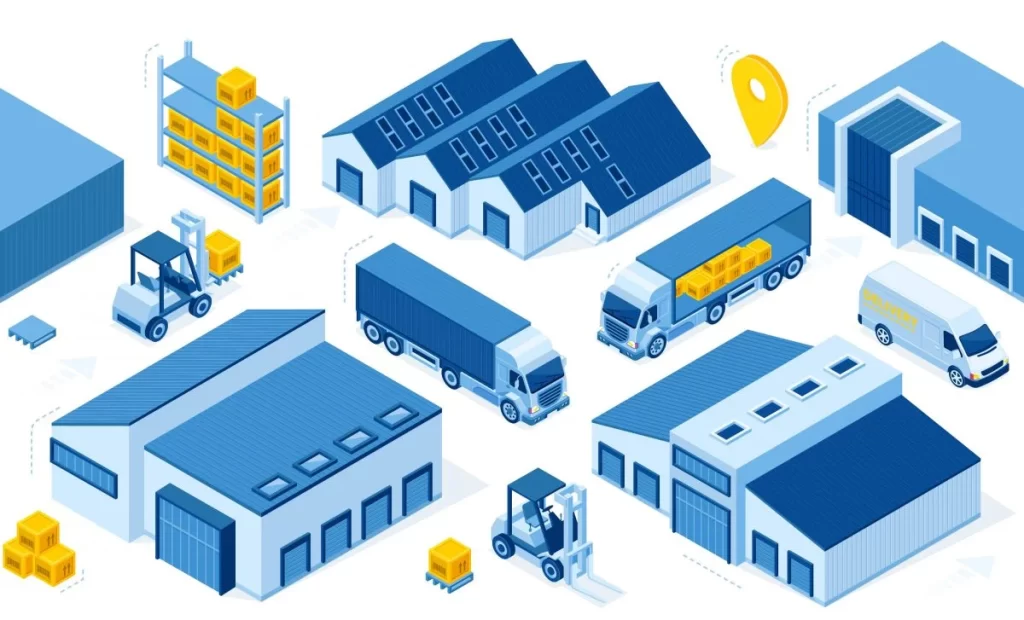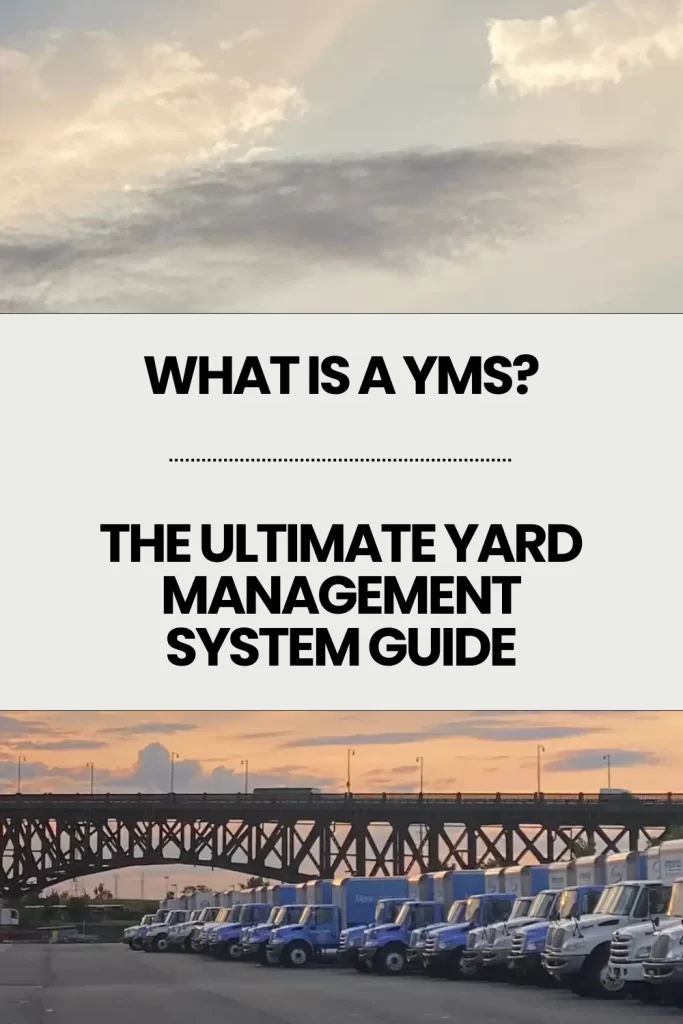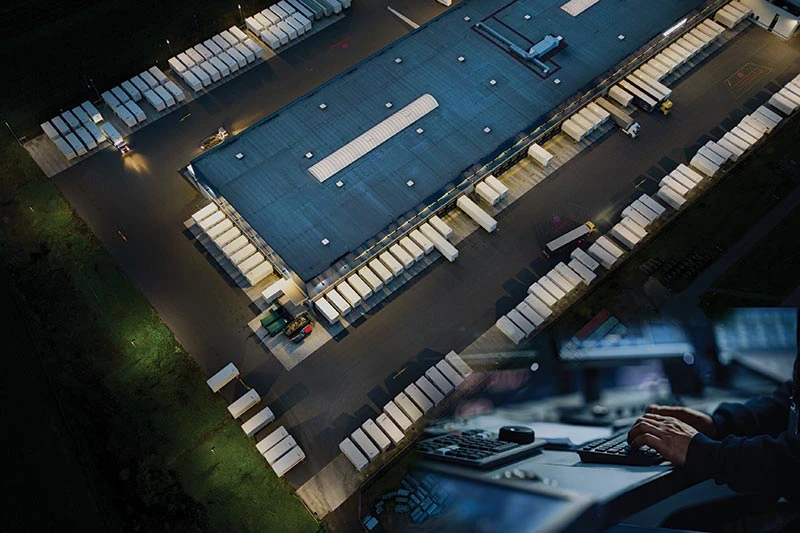
For decades, companies have struggled to maintain an accurate inventory of trailers and containers in their yards, as well as their precise locations. At first glance, this seems like a straightforward problem to solve. After all, a yard is a relatively small, controlled environment, and trailers are large, often immobile objects. If we can track SKUs in a warehouse, wouldn’t the yard be even easier to manage? However, as with most supply chain challenges, the devil is in the details.
A yard is a shifting, malleable, organic organism influenced by multiple stakeholders—carriers, customers, suppliers—each with competing priorities. Adding to the complexity, yards operate with a mix of repeatable, structured processes and one-off, unpredictable scenarios. As a result, for many years, yard management was left behind. While companies focused on digitizing their warehouses and transportation networks, yards remained dependent on manual processes—clipboards, spreadsheets, and CB radios.
The Rise of Yard Management Systems
Enter yard management systems (YMS). Over the past two decades, YMS vendors have developed solutions to track trailers, improve accountability, and alert management to costly inefficiencies. Broadly speaking, there are two types of YMS:
- Sensor-based systems – These rely on RFID, GPS, or AI-driven camera technology to monitor trailer locations.
- Process-based systems – These rely on employees updating trailer statuses and movements within a digital system as they work.
At first, sensor-based systems seemed like an obvious choice, but companies have since realized that they come with major drawbacks. Let’s break them down.
The Problems with RFID Sensor-Based Systems
1. RFID is Expensive
RFID yard management systems require passive RFID tags to be affixed to every trailer entering the yard. Scanners at entry and exit points track movements, while additional scanners on yard trucks update locations. The concept sounds high-tech, but the costs are staggering.
For asset-based companies, every trailer and potentially every tractor needs a tag. For 3PLs and facilities working with multiple carriers, every trailer that might ever enter the yard requires a tag. This presents several ongoing challenges:
- Forget to remove an RFID tag when a trailer leaves? Replace it.
- Tag stops working? Replace it.
- Falls off in bad weather? Replace it.
- Want a hands-free check-in process? Not possible.
- Scanner malfunctions? Pay for maintenance or replacement.
Ultimately, purchasing, implementing, maintaining, and updating RFID systems is prohibitively expensive for most logistics operations.
2. Inaccurate Location Data
Even if a company can afford RFID, the expected benefits often fail to materialize. One of the biggest pain points in yard management is the dreaded yard check—the time-consuming process of physically verifying trailer locations. Companies turn to RFID in hopes of automating this task. However, after investing hundreds of thousands of dollars, they discover that RFID only provides an approximate location within a six-spot radius—far from the precise accuracy required.
If a YMS indicates a trailer is at dock 101, but a WMS claims it’s at dock 107, someone must resolve this discrepancy manually. When companies ask RFID vendors how to obtain exact locations, the answer is sobering:
You still need to conduct yard checks.
In other words, after all the expense and effort, companies end up right back where they started.
GPS Sensors: Another Imperfect Solution
Another proposed solution for yard tracking is GPS sensors. Many carriers already use GPS tracking (e.g., GeoTab, Samsara) for over-the-road assets, so integrating this into a YMS seems logical. However, several challenges arise:
- Limited Access: While carriers and shippers may have access to GPS data, warehouses and distribution centers often do not.
- Resolution Issues: GPS sensors claim accuracy <6 foot radius, but real-world resolution is typically 4-6 trailer spots. This is not precise enough for dock-door operations.
- Integration Barriers: Facilities working with multiple 3PLs and carriers face significant hurdles in standardizing GPS tracking across all incoming trailers.
GPS has its place—such as tracking trailers in drop yards or large container terminals—but it doesn’t solve the fundamental problem of precise location tracking in distribution centers.
The Potential Promise of AI in Yard Management
As companies move away from RFID, AI-driven computer vision has emerged as a promising alternative. Instead of sensors, cameras placed throughout the yard use artificial intelligence to visually track trailer movements, automatically updating a digital yard map.
Vendors like Terminal Industries offer built-in YMS AI solutions (or soon will, their website is not clear if the software is available). Others like EAIGLE and SiteTrax provide camera-based location tracking that integrates with existing yard management software – with case studies and validated customer success stories. The advantages are clear:
- Minimal hardware investment (often using off-the-shelf cameras and an on-site server).
- No need for trailer tags or scanning devices.
- Seamless integration with existing YMS platforms.
However, AI solutions are still developing. Potential challenges include:
- Poor visibility at night in unlit areas.
- Adverse weather conditions (fog, snow, rain) affecting camera accuracy.
- Dirty or obstructed lenses leading to tracking failures.
While AI-powered solutions hold a lot of potential, they are still evolving. Some vendors are in the early stages of adoption, and there is a need for more real-world case studies to validate their effectiveness. As the technology matures and more implementations are tested, AI could prove to be a game-changer for yard management. Increased transparency and shared success stories from early adopters will help build confidence in these solutions over time.
The Power of Process-Based Yard Management Systems
Rather than investing in expensive and imperfect sensors, many leading facilities are turning to process-driven YMS solutions. Vendors like Yard Management Solutions, GateGo, YardView, and C3 Solutions are established, well regarded YMS solutions. Newer Europe-based YMS providers include Peripass and GoRamp. Process-driven YMS vendors provide software that relies on employees actively updating the system as they complete tasks.
Here’s an example:
- Yard drivers use tablets in their vehicles to log move requests, updates, and completions.
- The system automatically records movements, timestamps actions, and provides real-time visibility.
- Yard managers receive instant alerts for critical issues like detention risks.
This process-based approach has clear advantages:
- Lower cost of ownership: No expensive hardware required.
- Faster ROI: Implementations take weeks, not months, with ROI achieved in 6-12 months or less.
- Greater accuracy: Unlike sensor-based systems, every update is verified by an actual employee.
- Operational accountability: Employees track their own actions, reducing errors and misplaced trailers.
But wait – isn’t ‘process-driven’ simply a fancy way of saying ‘manual?’ Yes and no.
Process-drive YMS solutions provide forcing functions, automated alerts, and intelligent reporting. While the inputs might seem manual, when implemented properly this method allows facilities to have a high degree of certainty on data accuracy. Rather than relying on external sensors (which, as we’ve seen, can have major gaps), employees must take accountability for their actions in the system. Leading operations treat their process-driven YMS as the “system of record”, ensuring all actions that take place in the yard flow through the YMS first.
The Bottom Line: Process-Driven YMS is the Smart Investment
One of the biggest cost savings from any YMS is a drastic reduction in detention and demurrage fees—often by 95% or more. Increased visibility eliminates misplaced trailers, and smart alerts prevent costly mistakes. The question is not whether to implement a YMS, but which type will yield the best ROI.
The answer is clear:
- Implement a process-driven YMS first.
- Optimize visibility and workflows.
- If additional automation is needed later, explore AI camera solutions or GPS integrations.
Simply adding sensors will not fix operations. Companies must first focus on refining processes and procedures, ensuring their YMS serves as the system of record to track KPIs and deliver results. Sensor-based systems introduce high costs and uncertainty, while process-driven YMS solutions provide fast, measurable value—ensuring that your yard operations run efficiently, accurately, and profitably.
Other Resources:
- RFID Technology in Yard Management – podcast episode
- RFID With Yard Management: An Unnecessary and Costly Addition – article
- YMS Basics: RFID Yard Management System Technology – competing perspective

